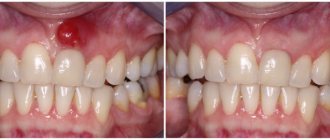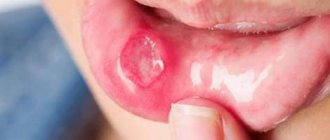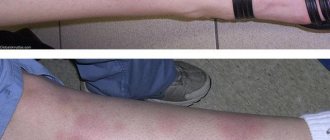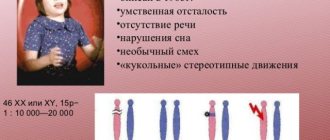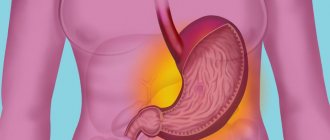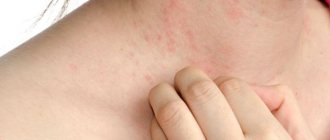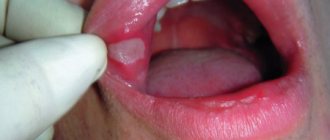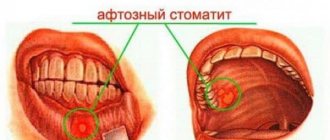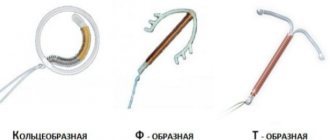Are you familiar with the feeling of burning and itching on your lips? Or the unexpected appearance of bubbles on the skin of the face and lips? 95% of the people on the planet know what I'm talking about. True, not everyone pays due attention to these things. Let's start with the fact that any inflammation of the oral mucosa is called STOMATITIS. But in this article we will talk about the most common disease in the world as a whole, popularly called HERPES. Namely, we will consider herpetic stomatitis, etiology, pathogenesis, clinic and treatment of this disease.
Methods of transmission of herpes infection
Herpes simplex virus type 1 is transmitted by contact and airborne droplets. It multiplies in epithelial cells and lymphatic organs, from there it enters the blood and nearby tissues, causing viremia. Subsequently, mucous membranes and facial skin are damaged and blisters appear.
Herpes can be hidden in the nerve ganglia, and the disease will have a latent form, but will worsen each time with a decrease in immunity, damage to the mucous membrane, and the development of various diseases, including respiratory viral infections.
Herpes is highly contagious and spreads quickly in children's groups. A healthy child easily becomes infected by sharing toys, dishes, and towels. Infection is possible through saliva, as well as from mother to fetus during pregnancy and childbirth. Infections in the mouth are less common in adults, but infection is also possible, especially if personal safety rules are not followed.
Possible complications
The risk of complications depends on the age of the child and most often occurs in children under 5 years of age with a weak immune system, as well as with delayed or inadequate therapy.
The most common complication caused by herpetic stomatitis is conjunctivitis (inflammation of the mucous membranes of the eyes).
Less common is keratoconjunctivitis, which also affects the cornea. This disease is dangerous due to deterioration of vision up to its loss.
Herpes viruses can multiply rapidly and spread throughout the body through the bloodstream. In this case, they can affect any organ. If viruses enter the brain, encephalitis develops. A bacterial infection, mainly staphylococci, is often associated.
Acute herpetic stomatitis
This pathology most often occurs in children from 6 months to 3 years of age upon initial contact with the virus. The incubation period is 1-1.5 weeks. Symptoms in 90% of cases are mild.
Herpetic infection is accompanied by gingivitis in the form of rashes on the gums. Treatment is symptomatic and etiotropic, that is, aimed at eliminating the cause of the disease.
Chronic relapsing
The disease develops into this form in children who have had an acute infection. Chronic stomatitis of herpetic nature is characterized by the characteristic localization of vesicles on the tongue, hard palate, and cheeks.
Lymph nodes are enlarged and painful on palpation.
Symptoms of general intoxication of the body are either absent or mild. In case of relapses, generalization of the infection is dangerous, which can lead to damage to internal organs or sepsis.
Overexposure, colds, ARVI and a number of other factors can provoke relapses of herpetic stomatitis in a child.
The disease can worsen at any time and with any frequency. But more often, relapses of chronic stomatitis occur under the influence of provoking factors that weaken the immune system. This:
- injuries of the oral cavity, lips;
- hypothermia, colds, ARVI;
- any inflammatory processes;
- allergic reactions;
- avitaminosis.
Why does herpetic stomatitis appear?
Symptoms of herpetic stomatitis appear after contact with a virus carrier or exposure to unfavorable external and internal factors. The herpes virus is a DNA-containing virus. It lives in the human body throughout life and provokes the development of infection under certain circumstances.
The main reason why herpes stomatitis develops in children and adults is associated with decreased immunity. Suppression of the natural defense mechanism creates favorable conditions for the proliferation of the pathogen.
Additional predisposing factors:
- damage to the mucous membrane;
- changes in the composition of saliva, suppression of the action of local protective factors and functions of the salivary glands;
- psycho-emotional stress, exposure to severe stress;
- direct contact with a carrier of the virus in the acute stage;
- use of other people's hygiene products and cosmetic products;
- dental diseases, ENT diseases, the presence of chronic infection in the oral cavity, pharynx, lower respiratory tract;
- recent severe infectious diseases or operations.
At risk are people with autoimmune, endocrine diseases, and disorders of the hormonal system. Diseases of the digestive system, especially dysbiosis and inflammatory bowel processes, create the preconditions for a decrease in the protective infectious barrier and weakened immunity.
Herpetic stomatitis - photo of a child
Contagious disease
HSV-1 (HHV-1 – human herpesvirus type 1) is a type of virus from the herpesvirus family. It can lead to the development of several pathologies, including herpetic stomatitis - inflammation of the oral mucosa.
Infection of the surface tissues in the oral cavity from a carrier of the herpes virus occurs through airborne droplets, through coughing, sneezing, and during conversation. Or contact - through hands, objects. Infection through the blood - hematogenously - is possible. For example, through the bites of infected animals, birds, blood-sucking parasites: mosquitoes, lice, ticks.
You can become infected by airborne droplets
Once in the body, HSV-1 remains dormant until favorable conditions arise for its activation.
Exacerbation of herpetic stomatitis in the mouth
It is impossible to say for sure what can trigger a relapse. Most often, the disease causes a decrease in the body's natural defenses. The herpetic type often occurs in weakened children who have various chronic diseases.
During exacerbation, characteristic clinical manifestations appear:
- inflammation and redness;
- the formation of a blistering rash, which quickly disappears with the appearance of erosive areas covered with a fibrinous film;
- local soreness of the mucous membrane;
- increased saliva production;
- enlargement of the submandibular lymph nodes.
The child may have a fever. Herpetic stomatitis in adults is easier, without fever and severe pain. Healing occurs in about a week. Typically the tissue recovers without scarring.
In the absence of effective local therapy, herpetic stomatitis in the oral cavity can be complicated by the addition of a secondary infection, deep tissue damage and other complications.
Chronic herpetic stomatitis of a recurrent form can affect the nervous system, various organs, and severely inhibit the functioning of the immune system. The disease is especially dangerous in preschool age. The herpes type in a small child requires serious monitoring not only from dentists and pediatricians, but also from immunologists and pediatric neurologists.
Causes
Herpes stomatitis in adults is a viral disease that is caused by the herpes simplex virus (herpes simplex virus types 1 and 2). The visible symptoms, which are popularly called a “cold,” are medically called oral herpes, which infects both the face and the mouth. This form of infection is the most common manifestation of herpes.
The main reason for herpetic stomatitis is reduced immunity. There are many reasons for infection with this virus, not only due to a decrease in the overall immune system of the whole body, but also due to a decrease in immunity in the oral cavity.
Some of the reasons for infection:
- change in climatic conditions: both overheating and hypothermia;
- trauma to the red labial border and oral mucosa;
- failure to comply with the rules of facial and oral hygiene;
- neuropsychiatric disorders;
- exacerbation of chronic tonsil infection;
- exacerbation of chronic tonsillitis;
- exacerbation of chronic sinusitis;
- exacerbation of untreated periodontitis or gingivitis;
- infected and untreated carious defects;
- various types of allergies;
- taking corticosteroids (drugs that eliminate inflammatory processes in the body);
- lack of vitamins;
- both hard tartar and soft plaque accumulated on the teeth;
- penetration of viruses and bacteria through the mucous membrane of the oral cavity against the background of breathing through the mouth;
- against the background of ARVI or AIDS.
Initial contact with the simplex virus primarily occurs in children in early toddlerhood, from six months to five years. The paradoxical situation is that the younger the child, the simpler and milder the disease progresses than in older children. Herpetic stomatitis in adults is usually very severe.
And also the reasons for the revival of the herpetic stomatitis virus may be:
- hormonal imbalances in the body;
- injured mucous membranes of the oral cavity;
- dehydrated body;
- incorrect dental prosthetics;
- dry oral mucosa;
- chemotherapy;
- poor nutrition.
The course of the chronic form of the disease
A person with a chronic form of herpetic stomatitis is a carrier of herpes simplex. As the disease worsens, its contagiousness increases. But even in the relapse stage, the carrier can pose a danger, especially for people who have not previously been in contact with this infection or have a severely weakened body.
Herpes stomatitis in the form of a relapse appears due to the following factors:
- hypothermia and overheating;
- decrease in the general resistance of the body, local immunity;
- damage to the oral cavity from various dental structures, tooth fragments, old fillings;
- exacerbation of any infectious and inflammatory processes in the body;
- severe stress;
- direct contact with a person who suffers from a herpes infection.
Most often, relapses occur in the cold season. During this period, the immune system is weakened, diseases of the respiratory tract develop, which often provoke activation of the herpes virus.
A series of exacerbations
If acute herpes stomatitis is not cured, it will become chronic. In this case, the patient is registered with the hospital.
The chronic form is characterized by cyclical exacerbations, mainly during the cold season or with inflammation in the respiratory tract. Each exacerbation is accompanied by blistering rashes, general weakness, irritability, aching joints, and loss of appetite. Body temperature can rise to 38.5 degrees.
Chronic herpes stomatitis occurs in mild, moderate or severe forms. With a mild course, signs of the disease appear up to two times a year, with an average course – two to four times a year. Severe symptoms can occur almost every month. In advanced cases, continuous exacerbation with increased symptoms is possible. To avoid health complications, the patient may be hospitalized.
Let's look at how to treat stomatitis caused by HSV-1.
Diagnostics
A dentist can make an accurate diagnosis of the herpetic form. For this, the clinical manifestations of the disease alone are sufficient. But to identify the virus, it is necessary to carry out laboratory diagnostics and serological studies of scrapings from the affected mucosa.
The most reliable information about the nature of the pathogen is provided by PCR and ELISA methods. For recurrent herpetic stomatitis, it is recommended to evaluate the functioning of the immune system and endocrine glands in order to promptly identify concomitant diseases and prescribe comprehensive treatment.
Traditional methods
Traditional medicine offers its own methods of treating herpetic stomatitis. Basically, all of them are aimed at local use in order to stop the spread of infection, reduce itching, swelling and pain.
Let's look at some recipes from traditional healers recommended for herpes stomatitis:
- a solution of alcohol tincture of calendula and water is used as a local mouth rinse;
- treatment of ulcers with hydrogen peroxide. Prepare a solution from 1 tbsp. peroxide and a glass of boiled water. You need to rinse your mouth with this solution;
- In the same proportions, prepare a solution from propolis tincture and water. Rinsing with this solution gives a positive result.
Most often, pharmaceutical forms of active ingredients are used in folk recipes. Traditional methods of treatment offer techniques for external use.
This will not have an impact on the viability of the pathogen, so such recipes can be used as an auxiliary therapy. In addition to affecting external ulcers, it is necessary to use antiviral agents. This will reduce the risk of developing chronic stomatitis.
Do not neglect the advice of your doctor, relying on the possibilities of traditional medicine. Using only external means, it is impossible to achieve complete recovery.
Features of the course of the disease in children
The immune system of a preschool child is actively “maturing.” This is why children often suffer from herpetic infections and have blistering rashes not only in the mouth, but also on the skin of the lips and near the chin.
The disease in a child can cause high fever, including seizures and vomiting. Children lose their appetite for several days. With herpetic stomatitis, the baby's gums turn red and bleed. Herpes in the form of new rashes appears after the next jump in body temperature.
After a few days, the ulcer blisters open with the appearance of erosions.
The main symptoms of herpes stomatitis are accompanied by additional signs:
- salivation;
- soreness and enlargement of lymph nodes;
- muscle pain;
- nausea, vomiting;
- child's moodiness;
- bad breath;
- refusal of food and sleep;
- runny nose, cough.
Often in a child, acute herpetic stomatitis is combined with respiratory diseases and conjunctivitis. Blistering rashes can be either single or small groups. Shallow ulcers are covered with a characteristic white coating. They are located mainly on the back of the tongue, gums, buccal and labial surfaces.
Herpes stomatitis - photo of blisters on the lips
Prevention
There is no specific prevention of viral stomatitis. You can only reduce the risk of infection, but you cannot completely eliminate it. Preventive measures include:
- giving up bad habits (biting fingers and placing foreign objects in the mouth contributes to the penetration of the virus into the oral cavity).
- washing hands after using the toilet or treating them with antiseptic wet wipes;
- brushing the mouth twice a day;
- limiting contact with adults and children;
- maintaining a healthy lifestyle;
- hardening.
In most cases, the symptoms of herpes stomatitis disappear after 1.5 weeks without a trace. Children and adults who have had a viral infection remain carriers for the rest of their lives. The problem can recur in an asymptomatic form or manifest itself with clear signs if the immune system is weakened.
Treatment of herpetic stomatitis
The oral cavity treatment procedure is carried out on an outpatient basis, but under the supervision of specialists. If a child with herpetic stomatitis has a high body temperature and a high fever, the pediatrician may insist on hospitalization, especially if there is a risk of infectious complications.
Read our article about what effective medications will help with herpetic stomatitis in children.
It is recommended to maintain bed rest and use separate personal items and utensils for the entire period of acute symptoms.
To reduce intoxication, you need to drink plenty of fluids. As for drinks, it is better to give preference to homemade compotes, decoctions of chamomile, linden and other anti-inflammatory herbs. Drinks and food should be at a comfortable temperature, without aggressive chemical components or irritants in the composition.
Treatment of herpetic stomatitis in adults and children is carried out with the following drugs:
- antiviral drugs active against herpes infections;
- antipyretics, other symptomatic drugs;
- local antiseptics;
- painkillers;
- regenerating and healing agents.
Medicines for herpetic stomatitis should be prescribed by a doctor, always evaluating the results of laboratory tests. If the causes of frequent relapses are associated with concomitant diseases, their treatment should be carried out by a specialized specialist. When the immune system is weakened, it is advisable to use immunostimulating drugs.
Particular attention is paid to restoring the microflora of the oral cavity. To do this, you can use chewable tablets with echinacea and other immunostimulating agents.
To quickly remove herpetic stomatitis, treatment must be carried out in a timely and comprehensive manner. For the herpes form of stomatitis, it is important to use not only antiviral drugs, but also modern antiseptics with analgesic, anti-inflammatory and healing properties. Such drugs significantly reduce the risk of secondary infections, quickly restore normal health and promote membrane regeneration.
After acute symptoms have been relieved, strengthening and preventive physiotherapy can be used. Additionally, it is recommended to take multivitamin courses and diversify your diet. Pay attention to the amount of antioxidants found in fresh vegetables and fruits.
Treatment procedures for herpetic stomatitis should be carried out with antiviral agents. But drugs that can suppress the growth of the herpes virus are advisable to use when the first symptoms of the disease appear. When the disease is in full swing, such remedies will be ineffective.
List of drugs for treatment
Antiviral:
Preparations with acyclovir - herpevir, acyclovir - are available both in tablet form for oral use for at least 5 full days to suppress the proliferation of herpes stomatitis, and in the form of an ointment that can be applied to delicate areas of the oral mucosa and suppress the development of the virus on already broken ones herpetic blisters or at the first signs of the disease - itching, swelling and swelling.
Oxolinic or bonaftone ointments, suppositories with interferon are used as dosage forms containing synthetic interferon. It is similar to human and helps to quickly overcome the virus.
Antipyretic:
Both children and adults may need remedies to relieve fever and fever. They reduce the temperature that rises due to the active viral attack of herpes on the human body. It can be:
- for children - paracetamol or ibuprofen, in suppositories or syrup, and over 12 years - in tablet form;
- if herpetic stomatitis in adults - the same Nurofen or paracetamol, aspirin or combination drugs such as Coldrex or Theraflu in the form of tablets, powders or instant teas.
Local antiseptics:
Among the local antiseptics used to treat herpetic stomatitis, conventional anti-inflammatory tablets or sprays for treating the throat are used - ingalipt, orosept, septefril or lizac, especially in pediatric practice. Decoctions of herbs - chamomile, calendula or sage for rinsing and lotions are also effective.
Adults are prescribed alcoholic plant extracts from plant materials - marigold, medicinal chamomile, aloe and kalanchoe.
Painkillers:
Lidocaine-Asept spray, Lidochlor gel or anesthesin tablets will relieve pain at the site of mucosal damage in small and adult patients.
In pediatric practice, dental tablets with anesthetics are prescribed for young children with herpes stomatitis who refuse to eat and drink. They are prescribed by a doctor in the dental department and relieve pain in the resulting ulcers. Be careful and careful: the combination mixtures contain anesthesin - it can cause local or general allergic reactions.
Regenerating:
Rosehip, sea buckthorn, wheat germ oils, and natural propolis promote the regeneration of inflamed membranes. I start using them after the inflammatory process has reduced, as prescribed by the doctor.
Solcoseryl, carotolin and vinylin accelerate the coverage of wounds with epithelium and improve the nutrition of tissues affected by herpes.
BioGaia ProDentis lozenges perfectly restore the microflora disturbed during the treatment of the inflammatory process. They are suitable for children aged 3 years and older and adult patients. This remedy is a dietary supplement that allows you to quickly restore colonies of lactic acid bacteria, which normally live on the oral mucosa and prevent the recurrence or development of herpetic stomatitis.
Treatment of herpes stomatitis in children
Stomatitis of herpetic origin requires an integrated approach. Therapy goals:
- eliminating pain and restoring the child’s nutrition;
- disinfection of rashes and their elimination;
- strengthening the body weakened by viral intoxication.
Newborns and infants are prescribed predominantly local therapy, which helps cure stomatitis. This:
- treatment of the oral cavity with antiseptic solutions and antiviral lotions, ointments;
- applications using analgesics;
- lubricating the mucous membrane with oil vitamin preparations.
Children over 4-5 years old are prescribed drug therapy using:
- antiviral drugs;
- painkillers and antipyretics;
- antibiotics;
- antihistamines;
- immunomodulators;
- multivitamin complexes.
Physiotherapeutic procedures, especially laser therapy sessions, have proven themselves well. Nutrition should be gentle. Salty, sour, spicy foods and sodas, which irritate the inflamed mucous membrane, are excluded.
Food should be such that it does not require chewing.
If after 3-4 days stomatitis does not go away, its symptoms intensify, the child should be admitted to the hospital.
In the complex treatment of herpetic stomatitis in children over four years of age, immunomodulators are often used.
Local treatment
When treating the oral cavity, use:
- antiseptic solutions (Chlorhexidine, Miramistin, Furacilin);
- painkillers (Anestezin, Trimecaine, Lidocaine, Pyromecaine);
- wound healing gels (Solcoseryl, Actovegin, Cholisal), rosehip oil, aloe liniment, Karotolin, vitamin A oil solution, Stomatofit balm.
Antiviral drugs
Herpetic stomatitis in children must be treated with medications that suppress the activity of viruses. Among them:
- Acyclovir (Zovirax) - ointment, tablets;
- Viferon (Interferon alfa-2b) - suppositories, gel, ointment;
- Bonafton - ointment, tablets.
Painful sensations are relieved by rinsing with infusions of sage, chamomile, calendula, and St. John's wort.
Antiviral drugs are effective only within 2-3 days from the onset of the disease, when the first vesicles appear in the oral cavity. If they are opened, it is too late to use these drugs.
Herpetic formations on the lips and facial skin in the absence of vesicles in the oral cavity are recommended to be eliminated only with external medications (gels, ointments).
Folk remedies
The following auxiliary procedures help get rid of stomatitis:
- Newborns and infants can lubricate their mouths with honey if they are not allergic to bee products.
- Painful sensations are relieved by rinsing with infusions of sage, chamomile, calendula, and St. John's wort.
- Sea buckthorn oil, which is used to lubricate the oral cavity twice a day, heals wounds.
How long does it last
Herpes stomatitis in children, which occurs in a mild form, is treated for 3-4 days. Moderate disease goes away in 1-1.5 weeks. In case of severe pathology, the course of therapy in a hospital can last about 1 month.
Types of stomatitis
The disease occurs cyclically: periods of exacerbation alternate with periods of remission. The stronger a person’s immunity, the less often relapses occur.
Acute stomatitis develops during initial contact of the body with the virus . As a rule, children in the first 3 years of life are affected. The condition is deteriorating sharply. Against the background of increased temperature, bubbles with liquid form in the oral cavity, which turn into ulcers. With proper treatment, the symptoms of gingivostomatitis disappear within a few days, and the virus becomes inactive.
Chronic recurrent infection occurs when the immune system is weakened. Oral rashes may reappear despite effective treatment. Looking at the medical history, you can find that the person has repeatedly consulted a doctor due to the appearance of mouth ulcers.
Symptoms
The incubation period for acute stomatitis of the herpetic type is about 4 days. The disease begins pronouncedly. The increase in body temperature can sometimes reach 41°C. A person is worried about signs of general malaise and weakness. Then acute soreness in the throat occurs, worsening while eating or talking.
Redness of the mucous membrane of the mouth, throat, and palate is characteristic. Herpes stomatitis occurs with rashes: the patient may notice the appearance of many blisters and ulcers.
Their number varies widely: often the oral mucosa with stomatitis can be covered by several dozen rash elements.
The vesicular stage of the disease quickly turns into ulcerative-erosive. Erosions have round, oval, slit-like outlines. Their edges are smooth, and the bottom is smooth, covered with a white or grayish coating. When a bacterial infection occurs, a person experiences necrotizing stomatitis: the ulcers are deep and painful.
A person can clearly see ulcers on the soft tissues of the oral mucosa. On hard tissues they look like small dots. The appearance and development of rash elements are accompanied by severe pain. This can cause children to constantly cry, scream, and they lose their appetite and sleep. Adults also experience similar symptoms.
With herpetic stomatitis, nearby lymph nodes are often affected (more details here). The rash may spread to the red border of the lips. If a person becomes infected with herpes virus type 2, they may develop a rash on their genitals. When he becomes infected, he may have severe pain in the joints, high fever, and severe intoxication. In this case, herpetic stomatitis causes the following symptoms:
- nausea, sometimes vomiting;
- bleeding from the gums;
- pain in the head, ears, neck.
What else to read How to treat manifestations of herpes on the tongue?
The duration of stomatitis does not exceed two weeks. About half of patients may have secondary infection. It is not characterized by such severe symptoms. The rashes are often single and local in nature. The frequency of relapses may vary.
If a person becomes infected with herpes from an animal, he may vomit.
Features of the course of the acute form of viral stomatitis
Depending on the degree of weakening of the immune system, exacerbations of viral stomatitis can occur with varying intensity of clinical symptoms.
A mild course is characterized by the absence of deterioration in the general condition, minor manifestations of catarrhal phenomena in the upper respiratory tract, severe hyperemia and swelling of the oral mucosa (gingival margin), the formation of single or small groups of bubbles, without a tendency to further spread.
Moderate herpetic stomatitis in adults occurs against the background of clearly expressed signs of intoxication with general weakness and increasing malaise. Multiple rashes are detected on the oral mucosa, and the body temperature rises to low-grade levels.
The severe form of stomatitis of a viral nature is distinguished by severe intoxication with diarrhea and vomiting, attacks of fever up to forty degrees, total damage to the oral mucosa with multiple rashes that tend to drain.
After bubbles filled with transparent exudate have formed on the surface of the mouth, the course of herpetic stomatitis follows the following scenario.
Over the next one or two days, the contents of the bubbles become cloudy.
After two days, the elements of the rash open, leaving behind isolated bleeding erosions.
In a short time, a febrinous coating of a yellowish or whitish tint forms on their surface, which ensures epithelization of the ulcers.
Sometimes elements of a herpetic rash with stomatitis spread to the border of the lips and the adjacent skin, and swelling and hyperemia spread to the gingival papillae and the marginal areas of the gums around the teeth.
Factors contributing to herpes infection
During primary infection, 80-90% of children have no symptoms. Only 10-20% develop herpetic stomatitis in acute form. Good prerequisites for infection with the virus are various injuries to the oral mucosa. Wrong choice of nipples, finger sucking habit, and teething disrupt the integrity of tissues and cause herpetic stomatitis.
Herpes stomatitis also appears due to carelessness of adults - licking a child's nipple, sharing towels and dishes. Once at the gate of infection, the herpes virus begins to multiply in this place, then the virus moves along the nerve trunks into the cells of the nerve ganglia. The virus integrates its DNA into the nuclei of nerve ganglion cells and remains there for life. After suffering an acute illness, a person develops a long-term strong immunity that does not allow the virus to become active for a long time.
Causes
Herpetic stomatitis is the result of infection with the herpes virus. The infected person has no idea that he is a carrier for a long time. Those with acute forms of the disease pose the greatest danger to others. Infection can occur through the use of shared utensils, towels and hygiene items. Stomatitis can occur after kissing an infected person.
The activation of the virus provokes the appearance of signs of the disease. The causative agent of the infection affects the skin, mucous membranes and internal organs.
The cause of the rash can be considered immunodeficiency caused by stress, acclimatization, pregnancy or poor diet. Herpes stomatitis can occur in the presence of diseases of the teeth and gums, especially periodontitis. The sharp edges of decaying teeth injure the mucous membrane, which increases the likelihood of inflammation.
Rashes on the tongue appear with diseases of the thyroid gland and genitourinary system, malignant tumors of various organs, vitamin deficiency, and disturbances of intestinal microflora. Stomatitis is a complication of influenza, ARVI.
Rashes on the tongue appear with diseases of the thyroid gland and genitourinary system, malignant tumors of various organs.
Symptoms of the disease
Code according to ICD 10 (international classification of diseases) – B00.2. Under it are herpetic gingivostomatitis and pharyngotonsillitis (inflammation that affects the throat and tonsils).
In a child, symptoms of the disease usually appear no earlier than six months of age. The first months of the baby are protected by immunity, which is transmitted to him from the mother.
The dangerous moment comes when the antibodies have dried up, and the child’s body has not yet had time to build its own defense , although various dangers already await it - for example, teething, which injures the mucous membranes.
The infection can be primary (for example, in an infant) and recurrent (more often in the adult version).
The very first symptoms, which are not always alarming, are redness on the mucous membrane.
However, very quickly the infection makes itself felt with painful sensations every time you touch the red spots - with a spoon, pieces of food, fingers.
Here are the symptoms characteristic of this disease:
- high temperature, and the increase occurs very sharply, up to 37-39 degrees;
- swelling of tissues;
- increased salivation;
- enlarged lymph nodes in the neck and jaw;
- formation of small blisters at the site of redness (on the 2-3rd day from the onset of the disease);
- the appearance of ulcers and erosion instead of burst blisters (on the 3-5th day);
- healing of ulcers with a white coating, which means the beginning of regeneration of damaged mucous membranes.
It is important to keep in mind that the contents of the bubbles (at first transparent and then cloudy) are very dangerous: they contain viruses that need to find a suitable “platform” for introduction and reproduction.
At this point, the patient is especially contagious to others and dangerous to himself, since the scope of infection can expand.
The course of the disease is accompanied by general malaise, body aches, weakness, and problems with eating.
Symptoms
Now let's look at the main features. Herpetic stomatitis in children does not appear immediately after entering the circulatory system. The incubation period ranges from 2 days to 3 weeks.
Symptoms and forms of pathology:
- The temperature rises to 37-38.
- Nausea, rare vomiting.
- Migraines, feeling unwell.
- Enlargement of lymph nodes.
- The child may refuse to eat because... there is a burning sensation and discomfort in the mouth.
- Increased salivation.
- The appearance of bubbles containing liquid inside. They are very painful, quickly burst and begin to heal.
- A fibrinous coating appears on the affected surface.
- Symptoms last up to 4-5 days.
- Swelling in the gums.
If treatment for this disease is not started immediately, a chronic form may develop. Recovery will take a very long time. In the future, with slight hypothermia, herpetic stomatitis in children may reappear. Therefore, you need to monitor the condition of the kids, do not let them freeze and get their feet wet.
Treatment
Before starting therapy, it is necessary to accurately establish the diagnosis, because the choice of drugs differs depending on the pathogen. It must be remembered that herpetic lesions are characterized by an increase in temperature and rashes in the form of blisters on the mucous membrane, in contrast to aphthous or fungal stomatitis.
Along with the prescription of drugs, the patient must change eating habits: eliminate spicy, hot foods, regularly brush your teeth, rinse your mouth after each meal. There is no big difference whether it will be an antiseptic solution or plain water. The main task is to remove food residues from the oral cavity and prevent the proliferation of microorganisms.
Basic principles of treatment:
- Antiviral therapy is the most effective. The herpes virus is sensitive to drugs such as Acyclovir or Zovirax. The drug is prescribed by a doctor in the form of tablets or solution for intravenous administration.
- It is recommended to lubricate the wounds with Oxolinic ointment, sea buckthorn or rosehip oil.
- Regular rinsing helps reduce pain and has an antiseptic effect. Miramistin or Chlorhexidine are widely used.
- Since small children cannot gargle on their own, the wounds can be lubricated with a tampon soaked in the solution.
- Antibiotics are not indicated for herpetic stomatitis . The exception is the addition of a bacterial infection.
- Yoddicerine is used for external use. The drug has an antimicrobial, anti-inflammatory effect, is not absorbed into the blood and does not accumulate in the body.
- When the temperature rises, antipyretics (Paracetamol, Ibuprofen) are indicated.
- Traditional medicine is an addition to the treatment of stomatitis. At home, you can rinse your mouth with a solution of soda, calendula or chamomile. Zelenka is currently used only to lubricate chickenpox rashes. More effective drugs are used to treat stomatitis.
During pregnancy and breastfeeding, taking medications on your own is prohibited. The herpes virus, entering the body, persists in the cells of the nervous system for a long time. It is impossible to completely cure a herpes infection. The main efforts are aimed at reducing pain, healing wounds and strengthening the immune system.
In adults
Stomatitis caused by herpetic infections is extremely rarely diagnosed in adults. The disease is considered an indicator of the state of the immune system. Its occurrence should be a reason to consult a doctor and undergo an examination.
Stomatitis caused by herpetic infections is extremely rarely diagnosed in adults. However, its occurrence should be a reason to consult a doctor.
It is necessary to exclude the presence of HIV infection, chronic pathologies of the endocrine system and internal organs. Frequent exacerbation of stomatitis in adults is a sign of persistent immunodeficiency and requires drug treatment.
